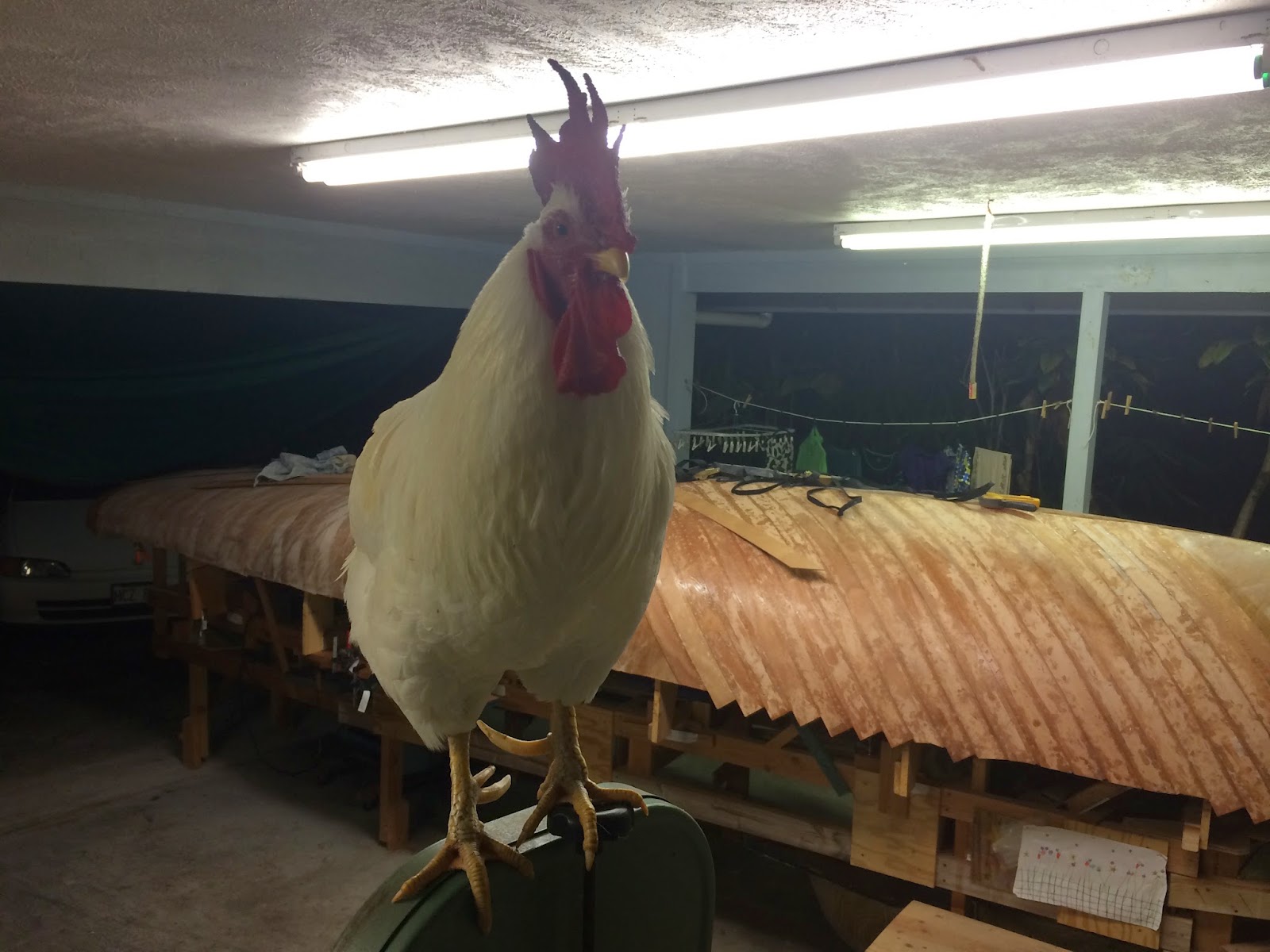There is certainly a new paradigm out there to staple securing of slats. 10 to 8 mm T50 staples with a strap or twine inserted under each makes for easiest post cure removal. It is still a significant bit of work to pull them out. In the flatter fore section I am passing on strap clamp but adding more staples after pressing hard to squeeze excess epoxy. I estimate 2-3 weeks to wrap this up for layer 2.
Tuesday, February 24, 2015
Wednesday, February 18, 2015
Catching up on starboard side now. Also cut up three remaining 1088 ply sheets into strips. Attempted to run straps under staples but only so so results with plastic. Straps work well but I can not tear them up with staple damage so I am trying more narrow but thicker strap material. The military surplus store might have some better options. The gun has pounded 8 mm staples flush leading to tear up of ply surface. Maybe just a simple rope under the head will raise it just enough and allow pulling up of one side of staple. It is easy to lift after that. 2 hours to prep, fit, glue and secure 3 plys.
Friday, February 13, 2015
Monday, February 9, 2015
Two coats of epoxy have been added over hull with sanding and microlite filler on the second coat. The surface is now adequte for the next layer. I started cutting up finer 1088 marine ply into strips and wetted one side with epoxy coating. The strapping is ready so the first slat is about to go on. This is going to be a lot of work!




A few notes on staples and guns. I mentinoned earlier in a post I used Arrow, Dewalt, Powermatic, and Stanley staplers. I know none of these are air powered so you could do better. To the point the Dewalt DWHTTR350 has performed the best. The first unit actually failed after several days. The hammer gripper would no longer lift the hammer spring. Traded for a new one and it is going fine. You must keep the pusher blade free of epoxy or make sure it is not glued before you start. Its the least fiddley changing staples (palm and your forearm) and gives the most consistent drive. The neighbors have not complained past 8pm with 40 bangs per ply. I tried two electric staplers and they had less power than any of the manual units. There are better industrial units that are electic. The Dewalt is very well built, can be unassembled and reassembled. Stick with the Dewalt or Arrow staples. Stanley staples hung up. The Arrow had problems with loading staples when the glue is hot and stress is high. It would catch and break the row into two parts.
The 4-1 Dewalt stapler 410 had issues. The high power was nice but it hung up.
The Powershot Pro and Stanley 2-1 electric were useless for this work. Simply not enough power to drive 10 thru 15 mm staples thru ply and stringers. They also tended to deform the heads of the staples. Otherwise they functioned.
The pictures show the 4 units and various staples lengths, all T50. Some braids are in the lower left and no issues there.
Covered strap with poly. System seems to work well, time to turn on the heat.
Monday, February 2, 2015
Decided to pull out all of the edge staples and replace with brads. They sink flush with the skin but can still be remmoved prior to covering with the next layer. This makes it much easier ot get the sanding down to the shear. Tried hot glue but it would not hold the skin to the shear beam. Added a first layer of epoxy on the port aft section.
Subscribe to:
Comments (Atom)




















